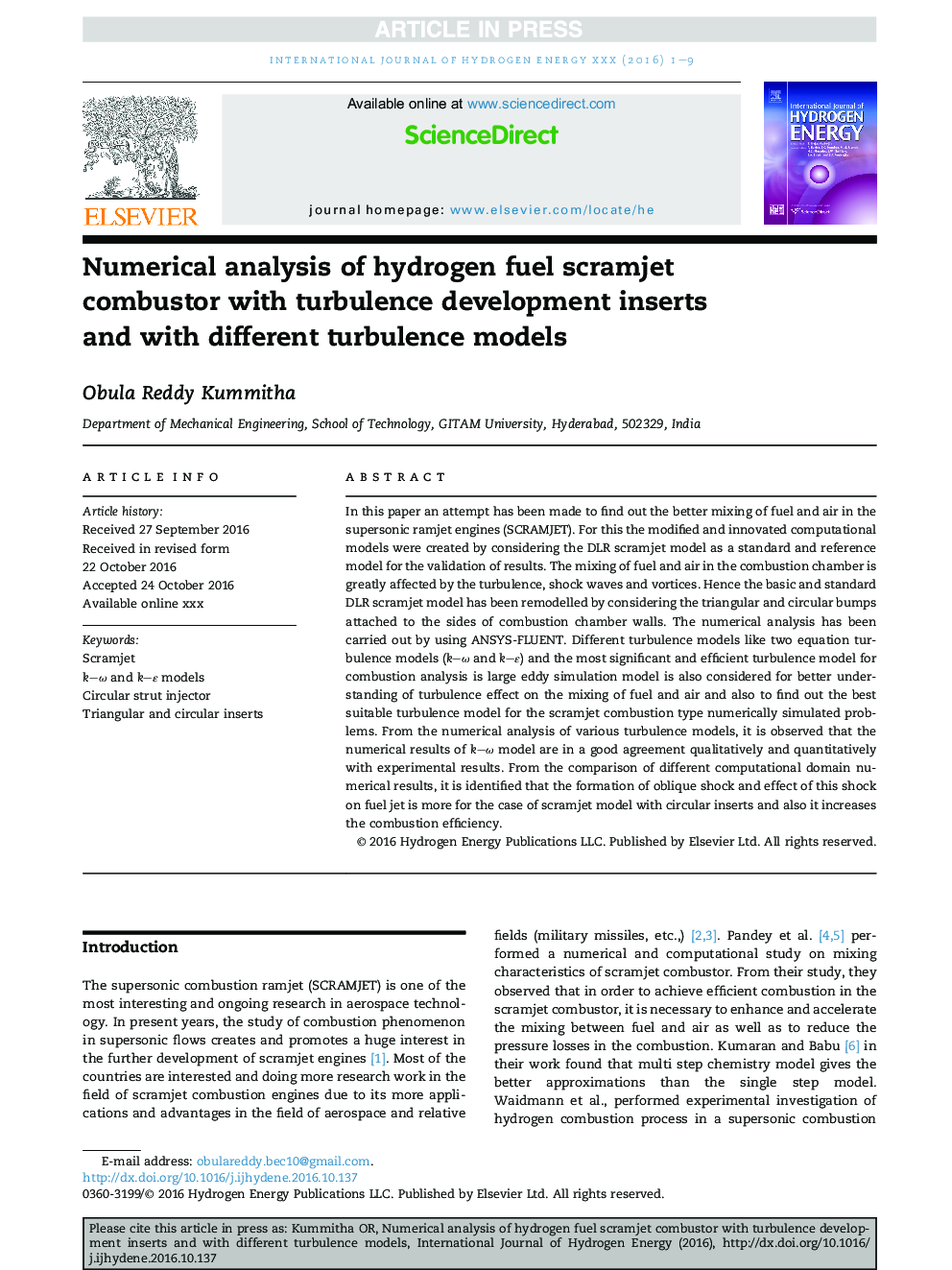| Article ID | Journal | Published Year | Pages | File Type |
|---|---|---|---|---|
| 5146843 | International Journal of Hydrogen Energy | 2017 | 9 Pages |
Abstract
In this paper an attempt has been made to find out the better mixing of fuel and air in the supersonic ramjet engines (SCRAMJET). For this the modified and innovated computational models were created by considering the DLR scramjet model as a standard and reference model for the validation of results. The mixing of fuel and air in the combustion chamber is greatly affected by the turbulence, shock waves and vortices. Hence the basic and standard DLR scramjet model has been remodelled by considering the triangular and circular bumps attached to the sides of combustion chamber walls. The numerical analysis has been carried out by using ANSYS-FLUENT. Different turbulence models like two equation turbulence models (k-Ï and k-ε) and the most significant and efficient turbulence model for combustion analysis is large eddy simulation model is also considered for better understanding of turbulence effect on the mixing of fuel and air and also to find out the best suitable turbulence model for the scramjet combustion type numerically simulated problems. From the numerical analysis of various turbulence models, it is observed that the numerical results of k-Ï model are in a good agreement qualitatively and quantitatively with experimental results. From the comparison of different computational domain numerical results, it is identified that the formation of oblique shock and effect of this shock on fuel jet is more for the case of scramjet model with circular inserts and also it increases the combustion efficiency.
Keywords
Related Topics
Physical Sciences and Engineering
Chemistry
Electrochemistry
Authors
Obula Reddy Kummitha,
